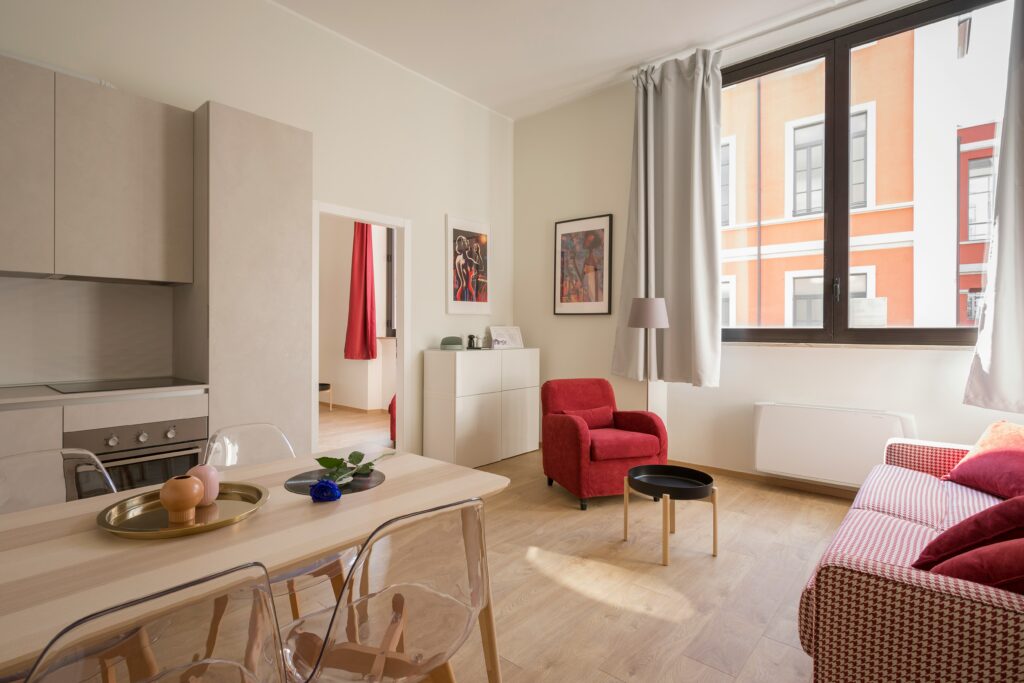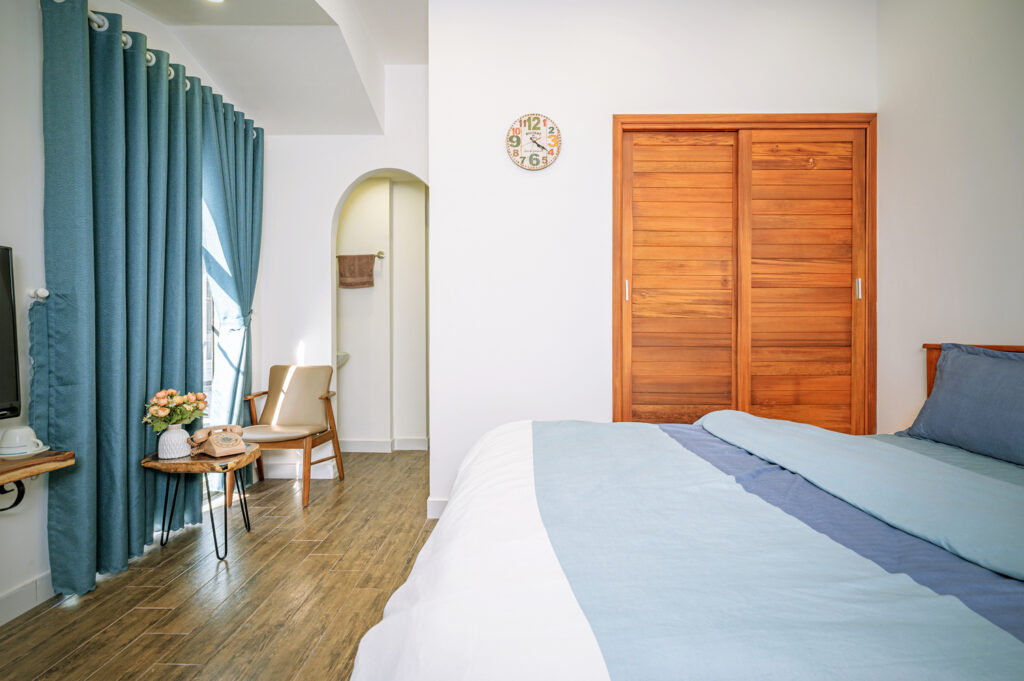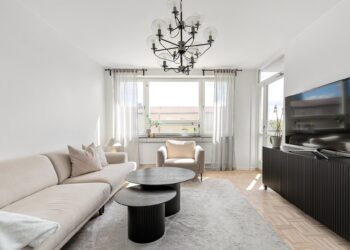Discover inspiring craft room ideas that blend decor and functionality. Perfect for any crafter looking to create a stylish and organized home office space!
10 Ideas How to Craft Room Design
Ever had your latest quilt project under the kitchen table? Or paints on a dining chair? I did for years. My crafting supplies were in boxes under the stairs, until I realized it was killing my creativity.
Then, I turned a basement corner into a craft room. It was a game-changer. Every tool had its place, and the room was filled with light. My favorite patterns adorned the walls. This change from chaos to order is what craft room design is all about.
Whether you have 100 or 1,000 square feet, good planning can turn clutter into inspiration. These 10 ideas will help you choose the right storage and balance colors with practicality. You’ll learn how to use vertical shelving and re purpose furniture to save money.
This guide is more than just organizing supplies. It’s about creating a space where creativity flows, no matter your budget or skill level.
Craft Room ideas for set up and decor!
- Craft room design ideas prioritize organization to boost productivity and joy.
- Lighting choices directly impact both visibility and mood during crafting sessions.
- Modular systems adapt to changing hobbies and space constraints.
- Budget-friendly solutions like repurposed items keep costs low without sacrificing quality.
- Color schemes and decor elements can energize or relax your creative mindset.
Understanding Your Creative Needs: The Foundation of Craft Room Design
Every craft room is unique and should reflect your personal style. Interior design experts say focusing on function is key. This ensures your space supports your creativity fully. Begin by thinking about how your craft influences your room design needs.
“A craft room must first ask: what does this creator need to thrive?” — Sarah Lee, Professional Interior Designer
Assessing Your Crafting Style and Requirements
Your craft shapes your space needs. For instance:
- Quilters need large flat surfaces and vertical storage for fabrics
- Potters require dedicated work zones with dust control systems
- Scrappers benefit from modular shelving for mixed media supplies
Measuring and Evaluating Your Available Space
Accurate measurements are essential. They help you make the most of your space. Here’s a guide to optimize your area:
A corner nook requires careful consideration of wall depth and ceiling height, making it ideal for installing angled shelving units. In a basement room, window placement and floor load capacity are key factors, allowing for the use of wheeled carts to create flexible work areas. When converting a bedroom, door widths must accommodate equipment transport, and installing pocket doors can help save valuable floor space.
Setting Clear Goals for Functionality
Ask yourself these questions to set clear priorities:
- Do I need dedicated drying areas (e.g., painters) or cutting tables (e.g., quilters)?
- How often will multiple people use the space?
- Which supplies require climate control?
These answers guide your storage and layout choices. Remember, effective room design starts with understanding yourself before measuring.
Maximizing Storage Solutions in Your Craft Room
Smart storage is key to a functional craft space. It’s not just about keeping things tidy. It’s about making your space both inspiring and organized. Start by sorting items into daily use, seasonal, or specialty categories.
This helps prevent clutter and keeps your workflow smooth. It’s a simple way to keep your space organized.
- Visible storage: Open shelves and clear bins let you see supplies instantly. IKEA’s Kallax units or The Container Store’s acrylic bins work well here.
- Vertical space: Install wall-mounted racks for scissors or hanging rods for fabrics to maximize floor space.
- Adaptive systems: Use modular shelving like ’s BILLY series to adjust layouts as your projects evolve.
Unique style, eco-friendly
Custom built-ins offer a perfect fit and sleek aesthetics but come at a higher cost, making them ideal for permanent craft rooms. Ready-made units are affordable and easy to set up, though they may require some assembly creativity, making them a great choice for small spaces or renters. Repurposed items provide a budget-friendly storage solution but tend to have less durability, making them best suited for seasonal or craft-specific storage needs.
Containers should also add to rooms decoration. Use colored bins for color-coding or decorative jars to display buttons and beads. Floating shelves with open slots add modern flair while keeping tools within reach.
Adaptable storage isn’t just practical. It’s a chance to infuse personality into your creative zone.

Craft Room Design Ideas That Blend Function and Beauty
Creating a craft room that looks good and works well is all about making smart choices. These choices should match your house design and personal taste. Every part, from storage to decor, should boost your creativity and fit well with your home’s interiors. Here’s how to find that perfect mix:
Open Shelving vs. Closed Cabinet Systems
Deciding between open and closed storage affects both looks and usefulness. Open shelving gives a sleek, tidy appearance but needs careful organization. Closed cabinets keep things hidden but might feel too confined. A mix of both is often the best choice:
- Use open shelves for items you use often and decorative pieces
- Pair with cabinets for items you use less or are bulky
- Find a balance between showing off and keeping things private to fit your house design goals
Vertical Storage Opportunities for Small Spaces
To avoid clutter, make the most of vertical space. Consider:
- Wall-mounted pegboards: Hang tools and hooks at eye level
- Ceiling-mounted shelves: Perfect for lightweight items like fabric rolls
- Sliding ladder systems: Access high areas without blocking the floor
“Vertical storage isn’t just efficient—it can become a signature design element in your interiors.”
Modular Solutions That Grow With Your Hobby
The IKEA BILLY Bookcase features stackable units with adjustable shelves, offering versatile storage solutions. MUJI Modular Shelving Units come in neutral tones, allowing for seamless integration into various home designs. West Elm Craft Storage Cabinets provide customizable drawer configurations, making them ideal for organizing craft supplies efficiently.
Repurposed Furniture for Unique Storage Options
Turn everyday items into storage solutions:
- Old suitcases stacked vertically for small supplies
- Pallet wood repurposed into floating shelves
- Vintage dressers adapted for fabric and tool storage
Use these ideas to make a space that inspires and is practical. This way, your craft room will enhance your home’s interiors look.
Creating the Perfect Lighting Setup for Detailed Work
Lighting is key in any craft space. In modern room design, the right lighting makes things clear and inspires creativity. Let’s see how natural and artificial light can make your space better without losing style.
Natural Light Considerations for Your Craft Space
Place work areas near big windows to get daylight. Use light-filtering blinds like Hunter Douglas’s Duette® honeycomb shades to cut glare but keep it bright. Need to change light levels with the seasons? Adjustable window coverings let you do that.
Task Lighting Essentials for Eye Comfort
- Color-accurate LEDs: Philips Hue White and Color A19 bulbs (3000K-5000K) show colors right for painting or sewing.
- Adjustable task lights: Pick fixtures like the IKEA VIMLE adjustable desk lamp for detailed work. It offers 1500-2000 lumens for clear vision.
- Overhead solutions: Track lighting with dimmable heads lets you direct light exactly where you need it.
Ambient Lighting to Set the Creative Mood
Modern room design is all about balance. Soft, warm LED strips (2700K-3000K) on shelves or under cabinets create a cozy feel. Tech Lighting’s minimalist pendant lights add style and spread light evenly.
Pair energy-efficient options like Cree LED panels with dimmers to adjust light levels. A well-lit space is not just useful—it’s where creativity meets style.
Ergonomic Workspace Design for Comfortable Creating
Creating an ergonomic craft space doesn’t mean you have to give up elegance. It’s all about finding the right balance between health and style. Start by adjusting your desk heights to fit your craft. For example, lower surfaces are better for quilting, while higher ones are great for pottery.
A chair with lumbar support and adjustable height helps prevent slouching. Look for sleek designs like the Humanscale Freedom Chair. It combines function with modern elegance.
- Desk Adjustments: Use risers under sewing machines or lower drafting tables to align with your body’s natural posture.
- Chair Choices: Opt for breathable mesh or leather upholstery that resists stains while looking stylish.
- Tool Placement: Keep scissors and glue within arm’s reach to reduce stretching; use angled trays for bead storage visibility.
The Humanscale Freedom Chair features a 360-degree swivel and gas lift, complemented by a sleek black frame with minimalist legs for an added touch of elegance. The Varier Backless Balance Stool has a PVC-free base with an adjustable tilt, showcasing contemporary curves in neutral tones. The Herman Miller Sayl Chair includes a lumbar pillow and a breathable backrest, available in over 12 color options for a stylish and personalized look.
“Ergonomics and style are not mutually exclusive—they enhance each other.” — , Ergonomics Designer
Add cushioned floor mats under work zones to reduce fatigue. Replace cluttered drawers with open shelves and baskets labeled by project type. Even small changes like these can make a big difference. They ensure your space supports both your body and your creative vision, all while keeping it visually appealing.

Color Psychology and Decor Elements to Spark Creativity
Choosing the right colors and design styles can turn a craft space into a place of inspiration. Colors like navy or sage green help focus. Warm neutrals, such as cream, encourage calm creativity.
Selecting an Inspiring Color Palette
Start by matching colors with your craft. Quilters might like warm terracotta tones. Painters do well with cool grays. Neutrals are great for bold projects. Try Benjamin Moore’s “Aristokraft” or Sherwin-Williams’ “Alabaster” for a timeless look.
Incorporating Art Deco Interior Design Elements
Art deco adds elegance without clutter. Try:
- Geometric wallpaper patterns from Schumacher or Hygge Living
- Gold or brass accents from brands like Crate & Barrel
- Bold black-and-white contrasts on shelves or textiles
“Geometric lines in art deco styles subconsciously 激发创新思维,” says design historian Sarah Susanka in *The Not So Big Home*.
Adding Personal Touches That Motivate
Personal touches make decor inspiring. Hang framed sketches above worktables or pin mood boards with fabric swatches. Add motivational quotes like “Create Fearlessly” in metallic frames. Display finished projects in shadowboxes to boost confidence.
Multi-Purpose Craft Rooms: Blending with Living Spaces
Creating craft zones in shared areas needs smart design. By adding crafting to home offices or dining rooms, you boost function and keep style. Here’s how to blend creativity into daily living spaces smoothly.
Craft Room and Home Office Combinations
Choose furniture that does double duty. A desk with sliding shelves from IKEA organizes both office and craft supplies. Use room dividers or color-coded bins to separate work and creative areas. Rolling carts help you move tools easily, keeping your space flexible.
Guest Room Transformations for Occasional Crafting
- Invest in under-bed storage containers to hide crafting materials.
- Install fold-down desks beneath windows or behind doors for instant workspace.
- Use wall-mounted pegboards to store scissors or tools out of sight when not in use.
Dining Room Ideas That Accommodate Crafting Needs
Extendable dining tables from Pottery Barn work as crafting surfaces. Use heat-resistant mats to protect tabletops. Overhead storage above chairs keeps supplies hidden. A pegboard above the table displays tools while keeping things neat.
Budget-Friendly Craft Room Transformations
Modern home design doesn’t need to break the bank. Start with the most important upgrades first. A sturdy work surface, like a particleboard desk from IKEA, costs under $50. It’s a solid base.
Match it with thrift-store carts painted in bright colors. This adds personality without spending too much.
“Budget creativity is the heart of modern design,” says interior stylist Amanda Lee. “Mixing secondhand finds with smart DIY touches builds spaces that feel intentional, not cheap.”
Use what you already have. Stack mason jars for thread storage or attach over-the-door hooks to save counter space. Clear plastic bins with washi tape labels keep supplies organized and decor simple.
- Step 1: Shop at Habitat for Humanity ReStores for discounted shelving units.
- Step 2: Use contact paper in geometric patterns to refresh outdated countertops.
- Step 3: Hang floating shelves using command strips to avoid drilling—great for renters or temporary setups.
Transform your space in phases. Update one area each month. Start with lighting, like affordable string lights from Home Depot. Then, move on to storage upgrades.
This method spreads out costs and keeps your space functional.
Look for “craft room hauls” on online marketplaces like Facebook Marketplace. Many sellers offer bulk organizing tools at lower prices. Use free design apps like Planner 5D to plan your layout before buying.
Organizing Your Supplies for Maximum Efficiency and Inspiration
A well-organized craft room is like a living room that’s both stylish and practical. It starts with systems that make things easy to find and inspire creativity. Here’s how to turn clutter into a well-organized space.
Color-Coding Systems That Work
Use color-coding like in living room organization to sort supplies. Try these:
- Rainbow labeling: Use colors to sort materials (e.g., blue for paper, red for adhesives)
- Project-based palettes: Organize by project or theme with colored bins
- Drawer dividers in matching colors for tool categories
Categorization Methods for Different Craft Types
For paper crafts, acrylic organizers with see-through compartments provide optimal storage and easy access to materials. Fiber arts benefit from hanging yarn racks and spool towers, keeping supplies neatly arranged and tangle-free. Mixed media projects are best organized with magnetic boards, allowing for temporary storage of small pieces while maintaining flexibility in workspace setup.
Maintaining Organization Long-Term
Start routines like weekly “5-minute tidy” sessions. Keep a visual inventory checklist on your phone for quick checks. Rotate seasonal supplies to keep favorites in sight, like changing decor in a living room.
Pro tip: Use both text and icon stickers on containers. Remember, “A place for everything, and everything in its place” is key to lasting organization.

Bringing Your Craft Room Design to Life
Every craft room starts with a single step. You might just reorganize a corner or transform a whole room. First, think about what’s most important for your creativity. Use storage solutions like IKEA’s Expedit shelves or Overstock’s modular systems to save space.
Even small changes can make a big difference. Adding LED strip lights for better lighting or a Herman Miller ergonomic chair can boost your productivity right away.
Remember, you don’t have to spend a lot to make changes. Use Command hooks for wall storage or repurpose thrifted furniture. Start by organizing your supplies with color-coded bins from The Container Store or label makers from Brother. Every little change helps create a space that sparks creativity.
For shared spaces, use folding screens from West Elm to create separate areas. Or, invest in portable carts for flexibility. If you’re short on floor space, vertical storage systems from (IKEA) or Overstock can turn walls into useful zones. Let your room evolve with your skills, knowing small upgrades today pave the way for bigger improvements later.
Keep track of your progress with a checklist of priorities: lighting, storage, and comfort. Share your journey on social platforms like Pinterest or Instagram using #CraftRoomGoals to find inspiration. Every decision, from paint color to new tools, makes your space uniquely yours. Start now—the first step is always the hardest, but the results will fuel your creativity for years to come.
FAQ
What are some essential elements to consider in craft room design?
Key elements include functionality based on your crafting style and space evaluation. Proper storage solutions and ergonomic workspace are also important. Effective lighting and personal aesthetic choices are critical. Each factor helps create a space that boosts creativity and efficiency.
How can I maximize storage in a small craft room?
Use vertical space with shelving and multi-functional furniture. Clear containers help with visibility. Modular storage solutions can grow with your hobbies. Repurposing items around the house can also help with organization.
What lighting is best for a craft room?
A mix of natural light, task lighting, and ambient lighting is best. Bright, color-accurate task lights are great for detailed work. Softer ambient lights create a welcoming mood.
How do I create an ergonomic workspace for crafting?
Choose a comfortable chair and adjust work surfaces to the right height. Place frequently used items within easy reach. Consider using stand-up desks or mats for comfort during long sessions.
What color schemes are effective for boosting creativity in a craft room?
Bright, uplifting colors can increase energy and creativity. Softer tones promote focus and calmness. Choose a palette that reflects your style and inspires you, like art deco for elegance.
Can a craft room also serve as a multi-purpose space?
Absolutely! Combine your craft room with a home office or guest room. Use convertible furniture and hidden storage solutions. This creates a cohesive design that’s functional.
How can I organize my supplies efficiently?
Organize supplies by color-coding, categorizing, and labeling. Regular checks help maintain organization. A simple system makes returning items quick and easy.
What are some budget-friendly tips for transforming a craft room?
Invest in a quality work surface and find second-hand furniture. Use DIY solutions and refresh items with paint or contact paper. Gradual upgrades help spread costs while keeping the space functional.









Very interesting thanks for sharing